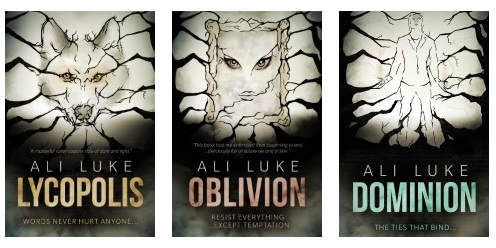Five Straightforward Ways to Create Stronger Characters

This post was originally published in October 2017 and updated in September 2020.
If your story doesn’t have strong, compelling characters … you’ll struggle to get readers.
However intricate your plotting or however exotic your setting, if your characters are flat and uninteresting, there’s nothing for the reader to invest in.
We read stories because we’re interested in people and what happens to them.
If your characters seem insipid or passive, here are three ways to make them into stronger, more interesting people.
#1: Make Them Want Something
Your protagonist probably (hopefully!) has a goal. That might be returning to the status quo, if something has shattered their peaceful life … or it might be getting out of their ongoing situation and improving things.
Secondary characters, too, can want things. They might want:
- A new job, or a promotion
- More money
- Revenge
- Validation or acceptance
- Power over someone or a group of people
- Justice
- A partner
- A divorce
- Children
If you can figure out what drives them – what they might sacrifice almost anything for – then you’ve got a far more interesting character than if you’ve not let them truly want anything at all.
#2: Give Them a Past
Your character has a past, or backstory. The reader should feel that the character existed before your story began … and that they’ll carry on existing after it ends. (Unless you kill them off part way.)
If their backstory looks like this –
Josie grew up in a happy family home, graduated high school and went to college to study her preferred major
– then it’s not much good to you! Your character needs to have what screenwriters call a “ghost” (explained adroitly by K.M. Weiland here): something in their past that haunts them.
It might be something terribly wrong they did, that they’re still trying to atone for.
It might be a missed opportunity that they’ve been kicking themselves about ever since.
It might be a seemingly innocuous comment someone made to them years ago … that they’ve never been able to shake off.
As well as making your character a more interesting person, the “ghost” in their past can be a great source of mystery that keeps readers turning the pages: you might reveal that something bad happened to the character without explaining it straight away.
#3: Put Them into Impossible Situations
One of the best ways to strengthen your characters is to force them to take action – and make choices.
Put your character into a situation where there is no good choice.
Make them choose between two bad alternatives. One might be worse than the other, but the option they choose will still have unpleasant (potentially horrific) consequences.
Alternatively, give them two horrible alternatives and have them use their ingenuity to take a third option.
Whatever the exact result, the process of them having to make a choice (and live with it) can give their character more nuance than before.
#4: Make them Suffer
Characters who are going through physical or emotional trauma tend to get our sympathy (even if it’s to some extent self-inflicted). You need to let your characters get hurt in order to bring out who they really are – or to push them to become better than who they previously were.
There are plenty of ways to make your characters suffer: physical pain, emotional trauma, financial ruin. For plenty of ideas, check out:
- Making Bad Things Happen to Good Characters
- 15 Ways to Make Your Characters Suffer (for the Good of Your Novel)
#5: Don’t Force them to be 100% Good or 100% Bad
Almost all characters have some good and some bad in them. You might have a protagonist who’s generally a good person – but they’ve got a bit of a temper. Or you might have an antagonist who’s horrible – but who shows surprising loyalty to their companions.
Readers know that real people are never all good or all bad, and they’ll be more convinced by a flawed protagonist than by a protagonist who always does the right thing, with a smile on their face.
Similarly, villains who are just pure evil can be scary … but even then, they should have some actual motivation. Maybe they desire power at all costs; maybe they are trying to right a perceived wrong; maybe they’ve been treated horrifically in the past and they’re lashing out. Giving them an occasional moment of doing something not so evil, or at least some reasons why they became the way they are, can make them seem more real – and quite possibly more scary – than if they’re just a cackling cardboard cut out.
Are there any characters that have really stuck in your mind from stories you’ve read? What made them so interesting and engaging … and how could you use those techniques or attributes in your own stories?
For more help creating strong characters, check out The Advanced Fiction Pack, a collection of seminars that you can work through at your own pace. This pack includes seminars on heroes & villains, on adding depth to your characters, and on handling viewpoint in fiction.
The Advanced Fiction Pack costs $20, which includes four full audio seminars, plus nicely-edited transcripts, and handy worksheets. Or, for just $50, you can get the full set of six self-study packs (24 seminars in total).
About

I’m Ali Luke, and I live in Leeds in the UK with my husband and two children.
Aliventures is where I help you master the art, craft and business of writing.
Start Here
If you're new, welcome! These posts are good ones to start with:
Can You Call Yourself a “Writer” if You’re Not Currently Writing?
The Three Stages of Editing (and Nine Handy Do-it-Yourself Tips)
My Novels

My contemporary fantasy trilogy is available from Amazon. The books follow on from one another, so read Lycopolis first.
You can buy them all from Amazon, or read them FREE in Kindle Unlimited.



This is why writing a story isn’t for everyone, because it’s one hell of a headache. It’s so hard just to finish a story, let alone having a compelling plot with realistic, three-dimensional characters. I worry that my characters are stereotypes.
I do think it’s HARD to write good fiction. I wrote three unpublished (probably unpublishable!) novels before Lycopolis, and a bunch of short stories. There are so many different things to wrap your head around, from the big picture of plotting and characterisation to the details of exactly which words you choose, in which order.
For what it’s worth, I love writing, I love learning about writing, and I wouldn’t give it up for the world. But I absolutely agree it’s not for everyone!
(Also, you don’t have to get it all right in the first draft. My first drafts often have huge plot holes, or really dodgy characterisation while I was trying to figure out who exactly my characters are. Nothing that a lot of rewriting won’t fix… ;-))
I love to write. I always have a desire to write. But a lot of times I think my writing is crap. I doubt myself big time. When I write a first draft, I try to get everything right and maybe that’s why I get frustrated. I have multiples ways to write a scene, and sometimes I don’t know which is the best way to write it.
Occasionally, I “rough out” a scene with bullet points and brief bits of dialogue, or draft it very quickly, to decide which way to go.
It sounds like your experience of drafting is very normal (if frustrating) — it is impossible to get everything right all at once. For years, my own writing technique has been to write the full first draft, print it out, then literally start again with a blank page and rewrite from scratch. These days, I find I can keep *some* of the first draft material, but I still end up changing something in pretty much every sentence … and I invariably cut out whole chapters (and occasionally whole characters).
It sounds like you’re probably much better than you fear, and if you press on through the discomfort of the first draft, you might find that your writing really starts to shine as you rewrite and edit. Good luck! 🙂
Thanks for the advice! In my experience, the depth of drawing and the strength of a character appears when the writer likes him.